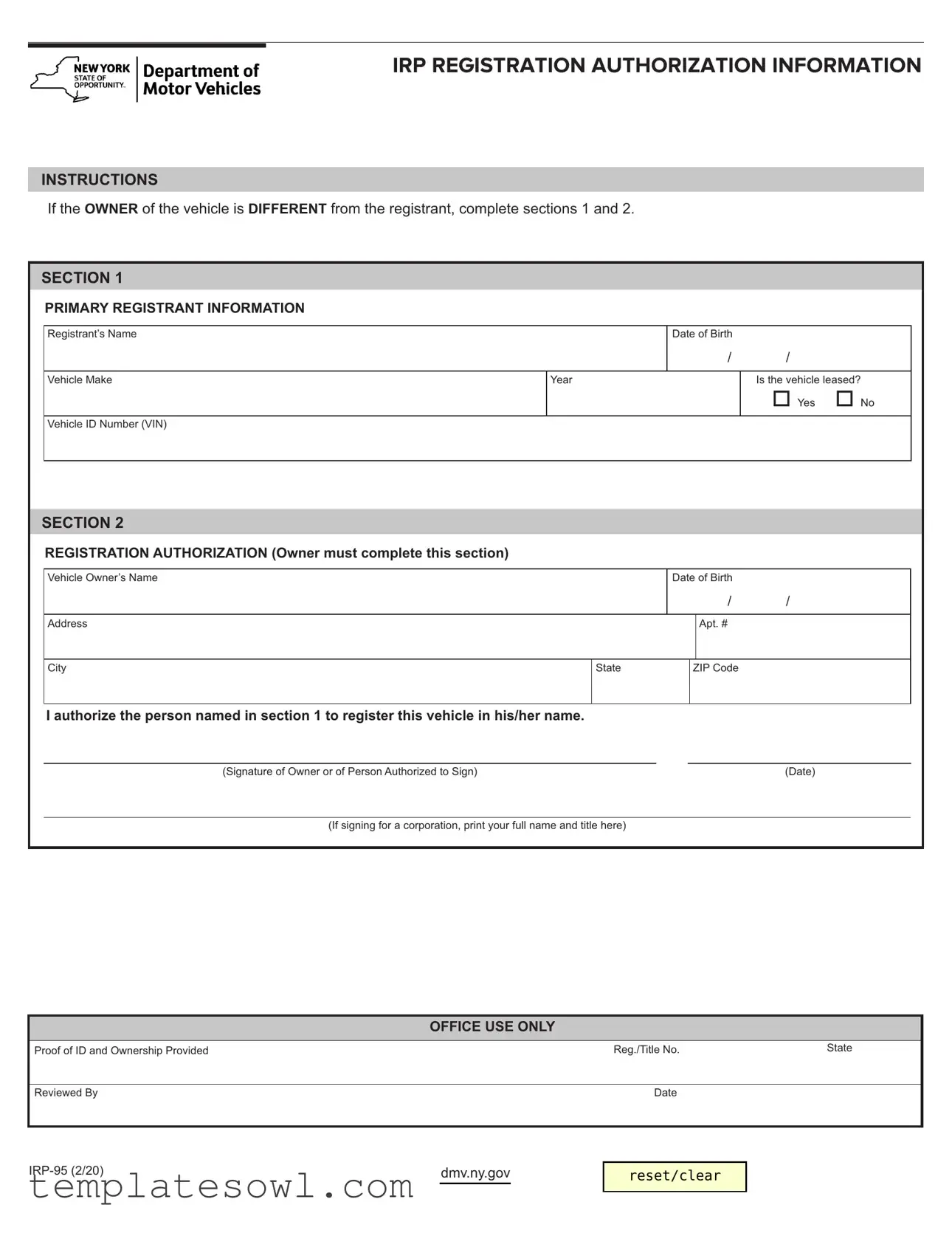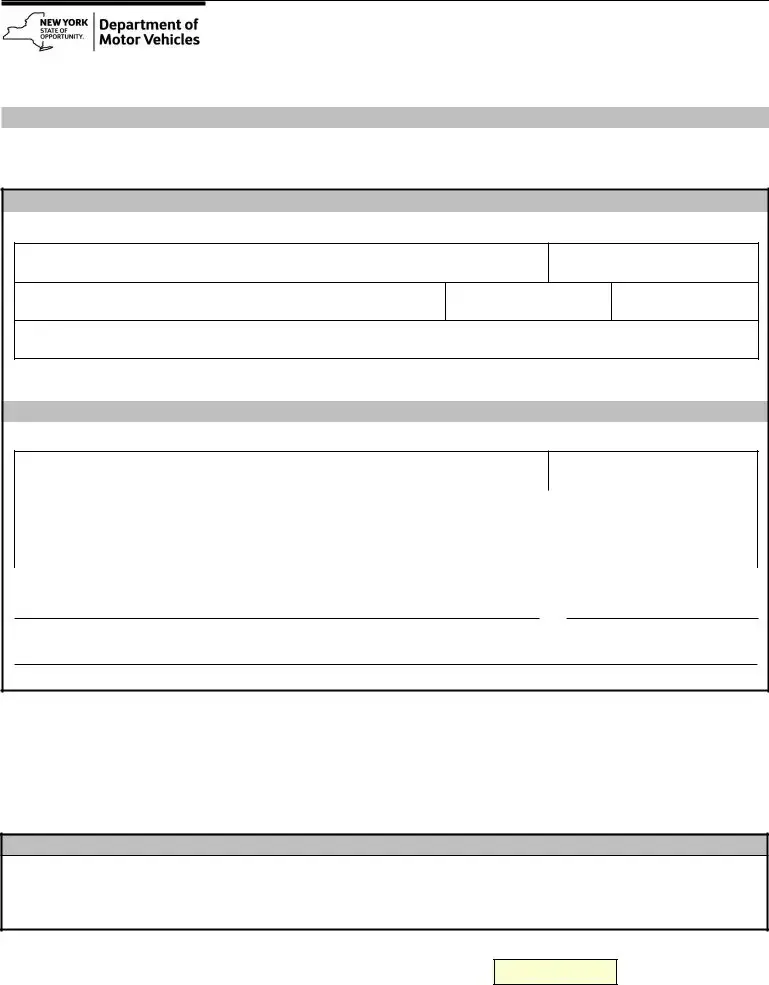What is the Mv 95 form used for?
The Mv 95 form is primarily used for the registration of a vehicle when the owner and the registrant are not the same person. It collects necessary information from both the registrant and the vehicle owner, allowing the registrant to handle the vehicle registration on behalf of the owner. This ensures that all parties are accounted for, whether the vehicle is owned outright or leased.
Who needs to fill out the Mv 95 form?
Both the vehicle owner and the registrant need to provide information on the Mv 95 form. If the owner is different from the person registering the vehicle, the form is required. The registrant should complete the first two sections, while the vehicle owner must supply their information and provide authorization in Section 2. This way, the registration process can proceed smoothly with the approval of the vehicle owner.
What information is required in Section 1 of the Mv 95 form?
In Section 1, the primary registrant needs to provide their name, vehicle make, vehicle ID number (VIN), and date of birth. Additionally, it is important to indicate whether the vehicle is leased. This section is crucial for identifying who will be handling the vehicle's registration and ensuring that all details are accurately captured.
What details must the vehicle owner provide in Section 2?
Section 2 requires the vehicle owner's name, date of birth, complete address (including apartment number, city, state, and ZIP code). The owner must also give their signature to authorize the registrant to register the vehicle in their name. If the signing party represents a corporation, they will need to print their full name and title in the designated area to signify their authority to sign on behalf of the corporation.
How do I authorize someone to register my vehicle using the Mv 95 form?
To authorize someone else to register your vehicle, you need to complete Section 2 of the Mv 95 form. Provide your personal details as requested and sign the authorization statement. Make sure that you fill out all the required fields accurately, as any missing information could delay the registration process. Your signature confirms that you allow the registrant to proceed with the registration on your behalf.
What occurs in the "OFFICE USE ONLY" section of the Mv 95 form?
The "OFFICE USE ONLY" section is reserved for the administrative staff at the Department of Motor Vehicles (DMV). Here, they will check for proof of identification and ownership, review the submitted information, assign a registration or title number, and indicate the state where the registration is being processed. This section is not for your completion but is essential for ensuring that all necessary checks have been performed behind the scenes.

